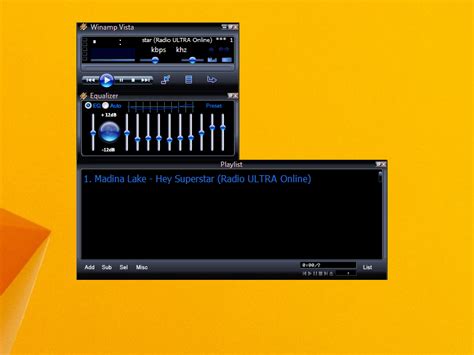In a world increasingly digital, there’s an undeniable charm to revisiting the past and rediscovering technologies that once defined an era. One developer’s recent endeavor to create a physical Winamp player taps into this nostalgia, promising to bring back the late ’90s vibes. For many, Winamp was more than just a media player; it was a staple of their digital experience. However, the implementation of this concept has sparked a mixture of excitement and disappointment among enthusiasts.
Initially, the title
Developer Takes ‘Retro’ Concept to New Level by Creating Physical Winamp Player
suggests a delightful blend of modern technology with nostalgic hardware. Enthusiasts, therefore, envisioned a device brimming with physical buttons, sliders, and dials, reflecting Winamp’s classic interface. The actuality of the project, however, is markedly different — it’s essentially a Raspberry Pi 4 with a touchscreen, encased to mimic the aesthetics of Winamp’s window frame.
For some, the lack of physical controls felt disheartening. Commenters like navigate8310 point out the discrepancy, expecting tangible dials and sliders rather than a touchscreen interface. This sentiment is echoed by users like mrfinn and animal531, who longed for a device reminiscent of old-school Hi-Fi systems with actual mechanical buttons and LED displays. The allure of physically interacting with a device, pushing buttons, and tweaking sliders, offers a sensory satisfaction that touchscreens simply can’t replicate.
In the quest for retro authenticity, the shortcomings of this project become apparent. HeckFeck and LeoPanthera reflect the common sentiment that while the effort is appreciated, the result falls short of a truly nostalgic experience. Instead, many were hoping for a device closer to the 3D renders of the classic Winamp player, complete with all its tactile glory.
There are, however, some inventive minds in the community who aren’t deterred by this project’s limitations. Dirkderkdurk shares his personal project that aims to achieve what many expected — a version with all buttons and sliders. His initiative, despite being a sporadic learning exercise, brings hope and excitement to those looking for an authentic throwback. By leveraging technologies like the Pi Pico and stepper motors, he mitigates touch-delay issues and moves closer to a tangible nostalgic experience.
This quest for a perfectly tactile Winamp player also delves into the broader discourse on modern versus physical user interfaces. Commenters like surfingdino lament a generation of developers unfamiliar with physical UI components. The shift towards touchscreens and capacitive buttons has streamlined manufacturing but at the expense of the tactile interaction many cherish. In professional settings, motorized faders and buttons remain prevalent, but consumer devices have largely abandoned them for cheaper, simpler touchscreen interfaces.
The economic nuances of this shift also come into play. Stavros highlights the cost-effectiveness and speed of implementing a touchscreen interface over multiple physical components. Yet, as pointed out by commenters like forgetfreeman, this trade-off often results in devices that are harder to repair and less satisfying to use. The complexity and cost of manufacturing physical buttons and sliders may be higher, but for a one-off project aimed at evoking nostalgia, the expense is arguably justifiable.
Despite the disappointment surrounding the current project’s execution, the ongoing discussions and shared experiences within the community foster a collaborative spirit. Videos showcasing motorized sliders, shared project updates, and debates about the best approaches signify a collective drive to bring this vision to life authentically. Dirkderkdurk’s evolving project serves as a beacon for those committed to marrying the old with the new, blending mechanical elegance with modern capabilities.
Ultimately, the journey toward creating a true physical Winamp player is as much about the community’s shared memories and ambitions as it is about the technology itself. While the current project may not have fully realized this vision, it reignites a passion for tactile experiences in a digital world. As enthusiasts continue to experiment, innovate, and share their progress, the dream of a fully physical Winamp player remains alive, offering a glimpse into a nostalgically rich future where past meets present in perfect harmony.


Leave a Reply